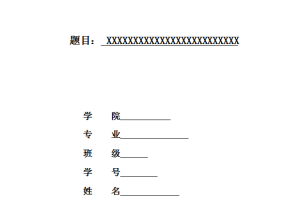古城镇的景观保护与规划—以川西古镇为例
摘要
川西文化又称蜀文化,是川西独特的地域和历史条件下发展起来的乡土文化,具有与中原文化迥然不同的特点。作为中国国务院1982年公布的第一批中国历史文化名城,成都拥有丰富的历史文化资源,而成都在蜀文化的历史文脉中占据着核心性的位置。上个世纪下半叶,广汉三星堆、成都金沙文化遗址的发掘更显示出古蜀文化的深厚与灿烂。古镇作为川蜀文化的延续,他们的存在不仅仅是建筑意义上的形式存在,更彰显古老传输文化的传承。
古镇,一般指有着百年以上历史的,供集中居住的建筑群。中国历史悠久,广阔土地上有着很多悠久历史、文化底蕴深厚的古镇。其中有部分包括川西古镇均已经被联合国教科文组织列入世界文化遗产。从目前川西古镇的房屋结构、外观形态而言保留了川西民居的特色,斗拱飞檐,雕梁画栋,遍植于屋前屋后的竹林,木板房、小青瓦屋顶、临江一排排的吊脚楼、保存完好的四合院…除此之外,庙会、舞狮、舞龙、坝坝筵、九斗碗等多姿多彩的民俗,让人们体验到了古街、古民居、古庙、古树的之外川西民俗风情。从某种意义上来说,川西古镇讲述着四川的沧桑和变迁,讲述着一方水土的风雨飘摇。川西古镇并非指具体的某一个古镇而是一系列的古镇,包括黄龙溪古镇、崇州怀远古镇、大邑安仁古镇、邛崃平乐古镇、雅安上里古镇等多个古镇的总称。
随着近年来我国古镇旅游业的兴旺与古镇旅游开发的力度的不断加大,虽然给古镇的规划与建设带来了资金保障,但是也使古镇面临的旅游压力亦逐渐显露出来,旅游开发为古镇保护也带来了一些问题,包括旅游承载量过饱和、过度商业化倾向这些都对古城镇的景观保护与规划带来了巨大的破坏与障碍。
鉴于此,本文主要希望在分析国内外在古镇保护方面的研究成果与经验,结合目前川西古镇在旅游资源开发的实际情况以及面临的挑战与自身景观所呈现文化韵味与特征。从古镇景观保护与规划的角度出发,对川西古镇目前所面临的旅游开发中的困境提出具有建设性的建议与提议,利用现代科技手段与时代性的创新性的古镇规划理念,在充分开发古镇自然风光与人文景观等旅游资源的同时,更好的维系其原本就脆弱的“原生态”风貌,继续承担延续我国悠久的川蜀文化的重任。
关键词:古城镇;景观保护与规划;川西古镇
Abstract
Western Sichuan culture, also known as the Shu culture, local culture developed under unique geographical and historical conditions in western Sichuan, and the Central Plains culture very different characteristics. China’s State Council announced in 1982 the first batch of Chinese historical and cultural city, Chengdu has a rich historical and cultural resources, and occupy the core of the location of Chengdu in Sichuan cultural historical context. The excavations of the last century, the second half of Sanxingdui, Jinsha Cultural sites also show the profound and brilliant of the ancient Shu culture. Continuation of the ancient town as Chuanshu culture, their presence is not just the form of architectural significance, but also highlight the cultural heritage of ancient transmission.
Ancient towns, generally refers to has a history of more than a century, for centralized residential complex. China has a long history and broad land has many a long and deep history, culture of the town. Some of them including Sichuan ancient town has been included in the world cultural heritage of UNESCO. From West Sichuan ancient town of housing structure, appearance shape retention characteristics of residential areas in Western Sichuan basin, the sets of cornices, carved beams and painted pillars, planted in front of the House after House of bamboo, wood houses, small blue house on the roof, Riverside lined diaojiao, preserved courtyard of forth In addition, the temple feast, lion dance, dragon dance, dam dam, nine bowls and other colorful folk customs, allowing people to experience the ancient streets, old houses, ancient temples, ancient trees outside of West Sichuan folk. In a sense, tells the vicissitudes and changes of Sichuan Sichuan ancient town, tell and the precarious. Does not refer to a specific one of the ancient towns in Western Sichuan ancient town but a series of towns, DaYi anren, including huanglongxi, Congzhou huaiyuan town, old town, Qionglai pingle ancient town and it came installed in the town and many towns collectively.
With the continuous increase of the Ancient Town in recent years the booming tourism industry and the Ancient Town Tourism Development, to the ancient town planning and construction funds to protect, but also the ancient town facing pressure from tourism is gradually revealed for the town protection, tourism development has also brought some problems, including tourism carrying capacity is too saturated, over-commercialization tendencies which are on the landscape protection and planning of the ancient town has brought great destruction and obstacles.
In view of this, mainly in the analysis of domestic and international research and experience in the town protection, combined with western Sichuan ancient town in the actual situation of the development of tourism resources and the challenges faced with its own landscape presented by the cultural charm and characteristics. Starting from the ancient town of landscape protection and planning point of view put forward constructive suggestions and proposals on tourism development in the plight of western Sichuan ancient town is currently facing, the use of modern means of science and technology with the times of the innovative town planning concepts, fully develop the tourism resources of the ancient town of natural beauty and cultural landscape, the better to maintain its already fragile “original” style, continue to bear the heavy responsibility of the continuation of our ancient Chuanshu culture.
Keywords: ancient cities and towns; landscape protection and planning; western Sichuan town
目录
一、绪论
1.1 研究背景
1.2 研究意义
1.3 创新性与不足
1.4 研究思路与方法
二、文献综述
2.1 古镇保护国内研究现状
2.2 古城景观保护国外研究现状
2.3 相关研究缺陷
三、川西古镇的旅游资源的特征
3.1 古镇释义
3.2川西古镇的历史
3.3川西古镇的旅游资源开发过程及现状
3.3.1川西古镇开发过程
3.3.2川西古镇景观解读
3.3.2.1自然的城镇风貌
3.3.2.2引人入胜的符号景观
3.3.2.3诗情画意的景观布局
3.3.2.4风格独特的房屋构造
四、川西古镇景观存在的问题
4.1旅游资源过度开发
4.1.1生态破坏严重
4.1.2文化流失与破坏
4.2 旅游收益使用不当
4.3 缺乏可循环发展理念
……
五、古镇保护与未来规划
5.1古镇旅游资源开发与保护的内容
5.1.1当地原住居民
5.1.2生态环境
5.1.3民间文化
5.2 保护措施
5.2.1合理规划古镇发展建设
5.2.2旅游客流调控
5.2.3大力发展公共交通
5.2.4建设项目环境管理
5.3 未来规划
5.3.1历史文脉延续——恢复文化载体遗址
5.3.2自然资源与人文资源的契合
5.3.3古镇环境艺术营造
5.3.4丰富生态旅游资源
5.3.5融合科技创新
5.3.6体现人文理念
六、结语
参考文献
个人简介
第一导师简介
第二导师简介
致谢





